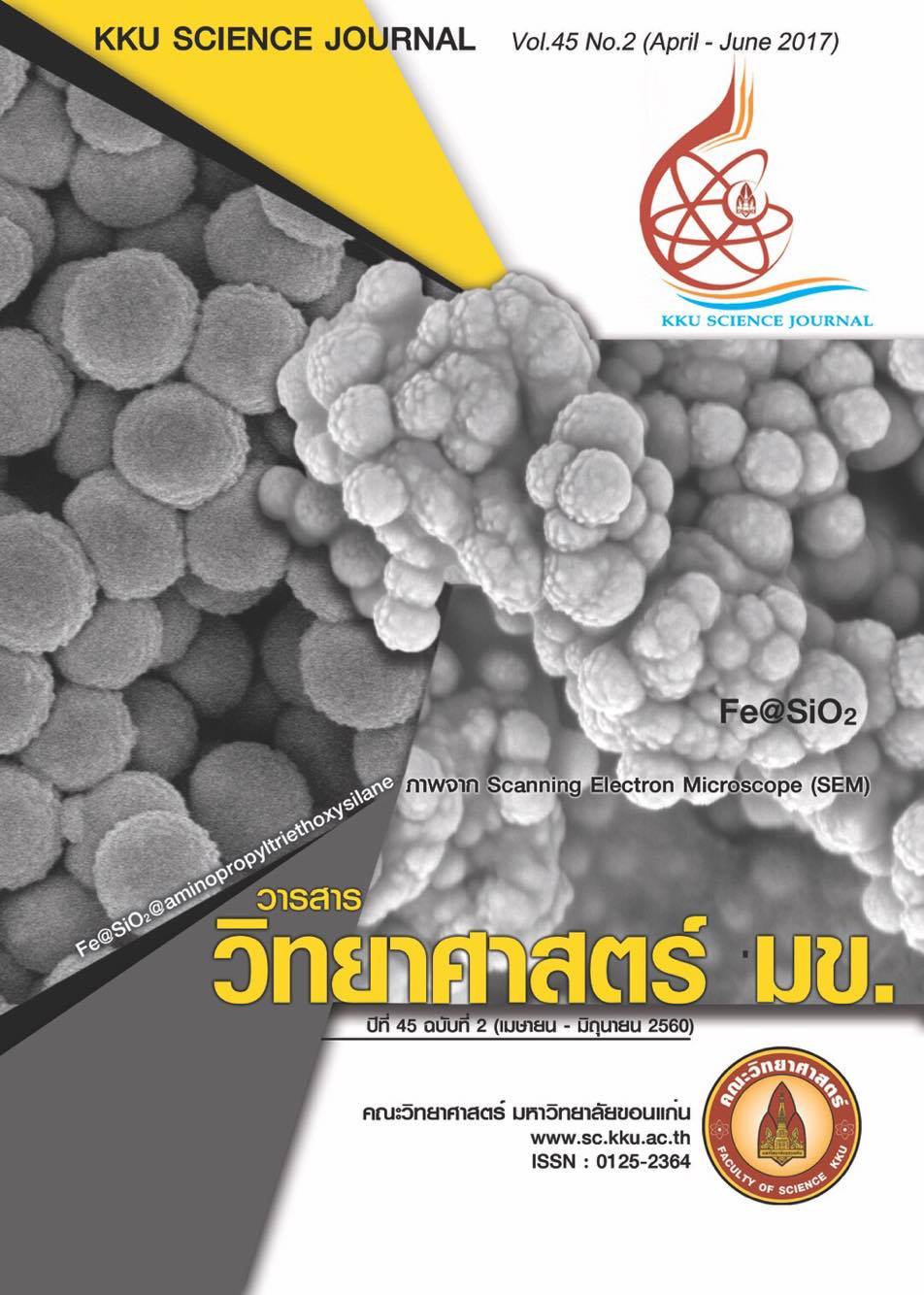Effect of Cassava Varieties with Different Cyanide Contents on Food Consumption, Growth and Yields of Eri Silkworm in Cool Season
Main Article Content
Abstract
Cassava is a principle food crop species important to the eri silkworm rearing of Thailand, in which the cyanide content in cassava in the form hydrocyanic acid (HCN) toxic to organism. This research aims to study the effects of cyanide in cassava leaves on leaf consumption, growth and yields of eri silkworm including the amount of residual cyanide in cassava leaves used to produce larva and pupa derived from rearing in cool season. The leaves of 5 representatives different cassava varieties containing different amount of cyanide, Five minutes, Huay Bong 80, Rayong 72, Rayong 9 and Kasetsart 50 were used as food plants of eri silkworm reared under laboratory conditions at a temperature of 25 ± 2 ° C, relative humidity (R.H.) of 80 ± 5 %. The completely randomized design was used. Eri silkworm responded to different cassava cultivars tested. The average intake of eri silkworm of larva stages 1-5 with Kasetsart 50 were minimal (18.39 g / larva) with significance to other varieties (P<0.05). For life cycle, among cassava varieties, the eri silkworm had similar survival periods of larva (1-5 instar) between 43-62 days. The 5 minutes varity gave the maximum survival percentage of 92%. However, the survival from larva (1- 5 instar) - Adult, rearing with Rayong 72 was the highest value (82.67 %), whereas the highest average larva weight (5th instar date 5) was obtained when fed with Five minutes variety. The average eri cocoon yields cultured with the Rayong 9 expressed the highest all values, fresh cocoon weight (2.4097 g), pupa weight (2.0658 g), shell weight (0.3097 g) and fresh cocoon weight/10,000 larvae (21.48 kg). For average egg yields, feeding with the Five minutes variety showed almost highest percentages of all the egg yield values (hatching eggs 89.20 %), total eggs (6,355.87 eggs) and total hatching eggs (5,680.93 eggs). The result of the cyanide analysis revealed that the Five minutes variety contained lowest cyanide as 64.46 mg/kg and in the eri silkworm cultured with Huay Bong 80 was the lowest (0.12 mg/kg fresh weight). Pupa weight fed with Rayong 72 was the lowest 0.79/kg fresh weight. Considering on the cocoon yields, Rayong 9 was the most suitable variety, while the Five minutes was the best suited for use in the egg production. The detected cyanide content in eri silkworm larva and pupa reared with all cassava varieties were safe for human consumption and exploitation.
Article Details

This work is licensed under a Creative Commons Attribution-NonCommercial-NoDerivatives 4.0 International License.


